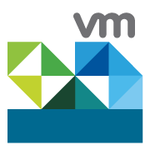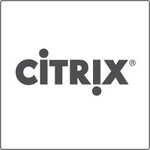Yes, most virtualization software can be accessible via many devices and platforms, allowing users to access and administer their virtual machines from anywhere. This functionality is very handy for firms that have remote staff or for individuals who utilize many devices for work and personal use. Just make sure your devices fit the virtualization software's system requirements for optimal performance.
List of 20 Best Virtualization Software
Experience the advanced features of VMware vSphere, turning your computer into a high-performing virtual workstation. This software offers extensive performance monitoring, efficient data management, and reliable storage. Boost productivity and mobil...Read More VMware vSphere
QEMU is a versatile and open-source emulator that enables users to run operating systems and applications designed for one architecture on another. It provides complete system and user-mode emulation, and offers the capability to run KVM and Xen virt...Read More QEMU
Paperspace solution for AI developers. This innovative platform offers a seamless and customizable environment for creating, training, and deploying models with ease. With its user-friendly interface and cost-effective GPU options, Paperspace streaml...Read More Paperspace
Virtuozzo is virtual desktop solution that simplifies data protection and management for your organization. With just a single click, you can back up all your data and operations, run multiple operating systems, and secure your system against unautho...Read More Virtuozzo
IBM Turbonomic - cloud management tool engineered to enhance your public cloud operations. This software is equipped with advanced features to reduce your cloud costs and boost performance. Explore its capabilities with a complimentary 30-day trial...Read More IBM Turbonomic
Dizzion solution for hassle-free data replication. This cutting-edge virtualization software enables you to effortlessly create virtual desktops that are accessible from any location. Plus, with Dizzion, you can seamlessly deliver individual virtual...Read More Dizzion
Ulteo Open Virtual Desktop, a virtualization solution that offers instant, secure access to virtual machines through any web browser. With its advanced capabilities, it even enables the creation of cloud desktops. Unleash the potential of Ulteo and e...Read More Ulteo Open Virtual Desktop
ZeroTier One - the complete solution for creating a secure and efficient virtual network. Our software seamlessly integrates VPNs, SDN, and SD-WAN systems across all locations, providing a strong and resilient network for all your operations. With Ze...Read More ZeroTier One
VMC solution for top-tier domain names and the creation of virtual infrastructure. This software allows for quick data replication, backup, and the creation of virtual applications on demand. With agentless functionality, VMC simplifies processes and...Read More VMC
Lanamark Suite is a virtualization software for businesses of all sizes. With its comprehensive functionality, you can easily create a dynamic virtual environment to optimize your operations. Its cloud-based data replication feature enhances disaster...Read More Lanamark Suite
PHD Virtual Backup, the top virtualization solution offering agentless application functionality at a 30% discounted rate. Save time with its user-friendly drag-and-drop editor and easily create backups on any operating system. Upgrade to PHD Virtual...Read More PHD Virtual Backup
Nomadesk is a cloud file-sharing platform that sets the bar high for security, dependability, and flexibility. Boasting encrypted data and redundant backups, your files are constantly secure and available on any device. Collaborate seamlessly, have f...Read More Nomadesk
everRun is a virtualization solution designed for convenient remote management and rapid deployment. Create a versatile virtual infrastructure for your business, regardless of your operating system. Our robust virtual machine software streamlines man...Read More everRun
The Virtual Desktop Platform, a virtualization software tailored for contemporary enterprises. Our intuitive interface provides a variety of adaptable features such as network supervision, performance assessment, virtual storage collaboration, and fi...Read More The Virtual Desktop
XenDesktop is virtualization software designed specifically for Windows users. It enables businesses to create a digital workspace that seamlessly integrates data from multiple devices, enhancing productivity and employee engagement. With its advance...Read More XenDesktop
Citrix Hypervisor - a versatile virtualization solution designed for effortless management and deployment of virtual machines and applications. With its robust and scalable platform, users can easily create, operate, and monitor multiple virtual envi...Read More Citrix Hypervisor
Oracle Virtualization is the revolutionary software that is reshaping the industry landscape. Utilizing cutting-edge technology, it elevates IT infrastructure to new heights, enabling businesses to optimize resources, reduce costs, and enhance produc...Read More Oracle Virtualization
Hubilo Virtual solution for hosting exceptional virtual events. With its dedicated virtual address, elevate your online meetings and keep attendees engaged even from a distance. Take your events to new heights and leave a lasting impression with Hubi...Read More Hubilo Virtual
ReadyAPI is an advanced software designed to facilitate API quality enhancement for Agile and DevOps teams. It boasts a unified interface, which enables creation, management, and execution of automated tests for various web services like RESTful, SOA...Read More ReadyAPI
V2 Cloud is a cloud-based solution for efficient data storage and sharing. Our robust software automatically backs up your data in a secure database, while providing a seamless platform for collaboration among multiple users. Enjoy unparalleled bandw...Read More V2 Cloud
Learn More About Virtualization Software
- What Is Virtualization Software?
- What Are The Recent Trends In Virtualization Software?
- Benefits Of Using Virtualization Software
- Important Factors To Consider While Purchasing Virtualization Software?
- What Are The Key Features To Look For In Virtualization Software?
- Why Do Businesses Need Virtualization Software?
- How Much Time Is Required To Implement Virtualization Software?
- What Is The Level Of Customization Available In Virtualization Software?
- Which Industries Can Benefit The Most From Virtualization Software?
- Conclusion
What Is Virtualization Software?
Virtualization software is a technological method for creating virtual replicas of actual hardware, operating systems, and application software. It works by separating the hardware and software layers, allowing multiple virtual environments to run on the same physical server. This software is a game changer for businesses, providing several benefits such as cost savings, increased productivity, and greater flexibility.
It enables customers to run various operating systems and applications on a single server, eliminating the need for many physical servers and lowering hardware expenses. Furthermore, virtualization software allows firms to rapidly and easily deploy new virtual machines, making it an excellent alternative for organizations with changing IT requirements. Another key benefit of virtualization software is the ability to boost system performance.
Virtual machines function more efficiently by isolating the hardware and software layers, resulting in faster processing times and overall performance. Furthermore, virtualization software provides increased security. Virtual machines are separated from one another, creating a secure environment for executing applications and testing software without jeopardizing the entire system.
Furthermore, it facilitates the management and monitoring of virtual machines, allowing IT teams to monitor performance and make required adjustments to optimize system resources. Virtualization software is a great option for firms wishing to optimize their IT infrastructure and reduce overhead costs. It provides various advantages, including better productivity, cost savings, and enhanced security, making it an invaluable asset to any organization.
With the growing popularity of virtualization, there are numerous software solutions available to satisfy a variety of business demands, making it critical to carefully examine and select the appropriate virtualization software for your organization.
What Are The Recent Trends In Virtualization Software?
In recent years, there has been a fast surge in the adoption of virtualisation software across multiple industries. This can be ascribed to the multiple benefits it provides, including cost savings, increased efficiency, and flexibility. As technology advances, so do the trends in virtualisation software.
Let's explore, the latest trends in virtualisation software to help you make an informed decision about purchasing this technology.
1. Cloud-Based Virtualisation: As cloud computing has grown in popularity, it is unsurprising that virtualisation has followed suit. Cloud-based virtualisation allows users to access virtual computers from anywhere, minimising the requirement for on-premise physical infrastructure. This trend is projected to continue as more firms adopt a cloud-first approach.
2. Containerisation: Virtualisation enables the construction of isolated virtual environments, or containers, that execute lightweight programs. Containerisation speeds up application deployment, making it a prominent trend in virtualisation software. This technology also supports easy scaling, making it excellent for enterprises with changing demands.
3. Hyperconvergence: This technology combines storage, computation, and networking into a single hardware system, removing the need for individual components. Hyperconvergence helps to decrease expenses, simplify management, and boost performance. As businesses seek to optimise their IT infrastructure, hyperconvergence is gaining traction in the virtualisation market.
4. Artificial Intelligence And Machine Learning: Virtualisation software is increasingly using artificial intelligence and machine learning to optimise resource allocation and increase efficiency. These technologies can analyse and forecast resource utilisation, making virtual environments more efficient and cost-effective.
5. Edge Computing: Instead of transferring data to the cloud or a data centre, edge computing processes it locally. By establishing and managing virtual machines at the edge, virtualisation software contributes to the expansion of edge computing's benefits. This trend is especially useful to companies that require real-time computing, such as the Internet of Things (IoT) and self-driving automobiles.
Benefits Of Using Virtualization Software
Virtualisation software is a powerful technology that has altered how firms manage their IT infrastructure. This software generates a virtual environment that allows many operating systems and applications to run concurrently on a single physical server, saving time and resources
In today's fast changing technology landscape, virtualisation software has numerous benefits, making it a necessary investment for enterprises of all kinds.
1. Cost Savings: One of the most important advantages of adopting virtualisation software is cost reduction. By merging several physical servers into a single virtual server, enterprises can dramatically decrease hardware and maintenance costs. This also results in lower energy expenses because fewer physical servers are required to execute the same workload. Additionally, virtualisation improves resource management, avoiding the need for costly server updates.
2. Improved Efficiency And Flexibility: Virtualisation software enables enterprises to make the best use of server resources. It enables the development of several virtual machines (VMs) on a single physical server, making it easier to allocate resources based on workload requirements. This flexibility guarantees that resources are not squandered, resulting in greater overall IT efficiency.
3. Simple Maintenance And Management: Businesses may simply manage and maintain their servers using virtualisation software, which is accessible through a common administration console. This streamlines operations, lowers the chance of human mistake, and allows IT workers to focus on other important activities.
4. Improved Disaster Recovery And Business Continuity: Virtualisation software has strong disaster recovery capabilities, enabling enterprises to swiftly restore virtualised servers from backups. This capability is very important in case of natural disasters, cyberattacks, or hardware breakdowns. It also allows organisations to simply relocate their virtual server to another physical server, if necessary, with minimal downtime.
5. Enhanced Security: Businesses can use virtualisation to create isolated, self-contained virtual environments. This adds an extra degree of security because malware or assaults on one VM do not affect the others. It also facilitates the testing and installation of security updates without disturbing the entire system.
6. Green IT Virtualisation: software not only reduces expenses but also encourages sustainability and green IT practices. Businesses can reduce their carbon footprint by reducing the amount of physical servers required, helping to create a greener environment.
Important Factors To Consider While Purchasing Virtualization Software?
Virtualisation software is an essential tool for enterprises of all sizes, allowing them to make the most of their hardware resources by deploying virtual machines and running various operating systems on a single server. However, with so many options on the market, selecting the proper virtualisation software can be intimidating.
To make an informed purchasing decision, below are the main elements to consider while purchasing virtualisation software:
1. Type Of Virtualisation: The most important element to examine is the type of virtualisation required for your business. There are three major types of virtualisation: server virtualisation, desktop virtualisation, and application virtualisation. Each variety serves a particular purpose, and it is critical to choose the one that best meets your company's demands.
2. Scalability: As your business expands, so will your virtualisation requirements. It is critical to assess the software's scalability and ability to manage increased workload, additional servers, and virtual machines. This will spare you the trouble of upgrading to a new software as your firm grows.
3. Quality And Reliability: Because virtualisation software serves as the foundation of your IT infrastructure, it must be of the highest quality and reliability. Check the vendor's reputation and read customer reviews to better understand their track record. Look for features like high availability and disaster recovery to guarantee that activities run smoothly and without interruption.
4. Compatibility: If you want to migrate your existing apps and workloads to a virtual environment, compatibility is an important consideration. To avoid compatibility difficulties, ensure that the software is compatible with your existing hardware and operating systems.
5. Management And Monitoring Capabilities: In addition to creating virtual machines, virtualisation software allows you to manage and monitor your virtual environment. Look for features like centralised management, automatic deployment, and real-time monitoring to help you manage your virtual machines.
6. Cost: Cost is a significant factor in every purchasing decision. Virtualisation software has many licensing schemes, such as per server, per processor, or per core. It is critical to select a licensing type that is cost-effective for your organisation, taking into account any additional expenditures such as support and maintenance.
7. Security: Because virtualisation software produces virtual environments, security must be a key consideration. Look for features like network isolation, data encryption, and access control to guarantee your virtual machines and data are secure.
8. Technical Support: In the event of a technical problem or challenge, timely and efficient technical support is critical. Look for a provider who provides fast and dependable technical help to minimize downtime and maximize productivity.
What Are The Key Features To Look For In Virtualization Software?
When it comes to selecting virtualization software, a few essential factors can significantly impact its performance and efficacy.
Here are the key features to consider while deciding which virtualization software to invest in:
1. Compatibility: The first and most critical factor to consider when looking into virtualization software is compatibility. It should be compatible with all of your current operating systems and software, as well as any future additions.
2. Scalability: As your company grows, your virtualization software should be able to maintain pace. Look for software that enables for simple scaling, such as adding more virtual machines or increasing storage capacity. This ensures that your virtual infrastructure can meet your business requirements.
3. Management Tools: Good virtualization software should provide powerful management tools that allow you to handle your virtual computers, storage, and other resources. This includes capabilities like live migration, resource monitoring, and automation tools that help IT managers save time and effort.
4. Security: Security is a top requirement for any organization, including virtualization software. To protect your virtual infrastructure from cyber attacks, use software that includes advanced security features such as data encryption, secure network connections, and access control mechanisms.
5. Performance: Virtualization software should deliver good performance with no lag or interruptions to your business activities. This includes capabilities like load balancing, resource allocation, and optimization tools to keep your virtual machines running smoothly and efficiently.
6. Multi-Tenancy: If you have many users or teams in your organization, multi-tenancy is an important feature to consider. This enables the construction of separated environments within the virtual infrastructure, guaranteeing that each team has its own resources and does not interfere with the others.
7. Backup And Disaster Recovery: Accidents and disasters do occur, hence it is critical to select virtualization software with robust backup and recovery capabilities. This ensures that your data is safe and quickly recoverable in the event of a system breakdown.
Why Do Businesses Need Virtualization Software?
In today's fast-paced corporate world, efficiency and flexibility are critical for success. Here is where virtualization software comes into play. Virtualization software enables enterprises to build virtual versions of their actual hardware, including servers, PCs, and operating systems. This allows different operating systems and applications to operate on the same physical machine, maximizing resources and enhancing efficiency. But why should organizations use virtualization software?
Let's have a closer look.
1. Cost Savings: Virtualization software allows organizations to cut hardware and maintenance costs. Multiple virtual machines running on a single physical server eliminate the need for additional hardware, resulting in significant cost savings.
2. Improved Efficiency And Productivity: Virtualization enables the creation and management of many virtual machines, each with its own operating system and applications. This means that firms can run multiple systems and applications concurrently, resulting in enhanced efficiency and productivity.
3. Disaster Recovery And Backup: Virtualisation software has disaster recovery and backup features, making it easier for organisations to recover from system failures, data loss, and other unanticipated events.
4. Scalability: As a firm grows, so do its IT needs. Virtualisation software enables easy scalability by adding virtual machines as needed, eliminating the need for extra physical hardware.
5. Improved Security: Virtualisation software can create a safe environment for running essential programs and sensitive data. Businesses can secure their systems from external attacks using technologies like isolated virtual networks and virtual firewalls.
6. Flexibility And Mobility: Virtualisation software enables organisations to access their systems and resources from any location, at any time. This flexibility and mobility make remote work possible, allowing employees to be more productive and effective.
How Much Time Is Required To Implement Virtualization Software?
The time required to adopt virtualisation software varies based on the program and the organization's IT architecture. However, there are some critical aspects that might affect the installation duration and should be considered when selecting a virtualisation solution.
1. Type Of Virtualisation: There are several forms of virtualisation, including server, desktop, and application virtualisation. Each of these has its own set of requirements, and implementation times may vary. For example, server virtualisation may take longer since it includes converting actual servers to virtual machines, whereas desktop virtualisation may take less time because it involves installing virtual desktops on existing hardware.
2. Software Scalability: The virtualisation software's scalability can have an impact on installation time. Some products may take more time to configure and set up in larger organisations with sophisticated IT environments. On the other hand, certain systems may have a simple interface and may be easily deployed, making them appropriate for smaller enterprises.
3. Integration With Existing Systems: The integration of virtualisation software with existing systems and applications might have an impact on installation time. If the software is incompatible with the organization's existing infrastructure, additional time may be required to make necessary changes or modifications.
4. IT Expertise: The expertise of the IT team in charge of integrating the program plays an important role in deciding the schedule. If the team has previous experience with virtualisation, the implementation may be finished more quickly than if the team has little competence in this area.
5. Training And Testing: Before completely installing virtualisation software, it is critical to train the IT personnel and undertake extensive testing. This guarantees that the program is properly configured and functioning, lowering the chance of future issues or downtime. The time required for training and testing should be included in the implementation timeframe.
What Is The Level Of Customization Available In Virtualization Software?
When it comes to virtualisation software, customisation is an important factor to consider. It defines how much control and freedom you have over your virtual environment. Simply said, customisation is the ability to tweak and configure software to match your individual wants and expectations. The degree of customisation in virtualisation software varies substantially depending on the type and brand of software you select.
However, most virtualisation software provides a wide range of customisation options, allowing you to tailor your virtual environment to your preferences. One of the most important customisation options in virtualisation software is the ability to assign resources to virtual machines. This means you can allocate particular quantities of processing power, memory, and storage to each virtual machine based on its workload and requirements.
Another major customization feature is the ability to select and configure various networking parameters for your virtual machines. This includes constructing virtual networks, configuring firewalls, and monitoring network traffic between virtual computers. Furthermore, virtualisation software enables the customisation of hardware and software settings, such as CPU use, operating system, and drivers, to improve performance and efficiency.
You can also use templates and clones of virtual machines to simplify deployment and management. Some advanced virtualisation software includes APIs and SDKs that enable additional customisation and integration with other software and systems. It is crucial to remember that the extent of customisation will differ based on the virtualisation software you select. For example, server virtualisation software may have greater customisation possibilities than desktop virtualisation software. As a result, it is critical to conduct thorough study and comparisons of various virtualisation software to determine which one best meets your customisation requirements.
Which Industries Can Benefit The Most From Virtualization Software?
Virtualization software is a powerful tool that can benefit a wide range of industries, including small businesses and large organizations. This tool allows businesses to create virtual versions of servers, operating systems, storage devices, and applications, increasing their flexibility, scalability, and cost-effectiveness.
1. Information Technology (IT): One of the primary industries that can benefit from virtualization software is information technology. It is a fantastic choice for this firm since it allows IT professionals to efficiently and securely manage resources such as servers and networks. Virtualization enables the quick and easy completion of processes that would otherwise need time and resources, such as server configuration.
2. Education: Virtualization software offers numerous advantages to the education sector. It enables schools, colleges, and universities to centralize their IT infrastructure, reducing costs and simplifying management. This enables educational institutions to simply grant students and lecturers remote access to virtual desktops, software, and resources.
3. Healthcare: Virtualization software in the healthcare business has the potential to improve patient care and efficiency. It lets healthcare staff to access patient records and applications from any device, allowing for more rapid and precise care. Additionally, virtualization helps healthcare businesses secure sensitive data and comply with industry regulations.
4. Financial Services: Financial institutions deal with huge amounts of data, therefore virtualization software is a useful tool. It lets these businesses to better manage their data, applications, and servers, hence improving security and compliance. Furthermore, virtualization can help financial institutions save money on hardware while reducing downtime, hence enhancing overall operations.
5. Retail: Virtualization software can help merchants speed up activities like inventory management and sales transactions. Retailers who virtualize their systems have access to their apps and data from anywhere, reducing the need for expensive hardware and increasing flexibility. This enables retailers to respond to changing market demands more quickly.
6. Manufacturing: Manufacturing organizations can considerably benefit from virtualization software, which simplifies procedures and improves resource management. This software enables these organizations to scale their IT resources as needed, resulting in more efficient production and reduced downtime. It also allows them to save money by virtualizing their data storage and servers.
Conclusion
After evaluating and comparing the various options on the virtualization software market, it is clear that virtualization technology has numerous advantages for businesses of all sizes. Virtualization software has become an indispensable tool for modern businesses, offering cost savings, increased efficiency, and flexibility. When deciding which virtualization software to purchase, you should carefully consider your organization's specific needs, budget, and future growth projections.
This will assist you in determining which features and capabilities are critical to your business and ensuring that you make the best possible investment. Based on our research and analysis, we strongly recommend that you consider compatibility, scalability, ease of use, security features, and customer support when making your decision. Don't forget to look into additional features like disaster recovery, high availability, and management tools that can enhance your virtualization software.
Whether you want to virtualize your servers, desktops, or applications, the right virtualization software can significantly increase your organization's productivity, agility, and cost savings. So, take the time to carefully consider your options and select a dependable and robust virtualization software that meets your needs and fits within your budget. With the right virtualization solution, you can take your business to the next level while staying ahead of the competition.
Virtualization Software FAQ's
Can Virtualization Software Be Accessed Across Multiple Devices And Platforms?
Is Virtualization Software Future-Proof And Adaptable To Emerging Technologies Like AI, Blockchain Or IoT?
Virtualization software is highly customisable and future-proof, making it ideal for developing technologies such as artificial intelligence (AI), blockchain, and Internet of Things.
Its capacity to generate virtual environments facilitates the smooth integration and testing of various technologies, making them more accessible to organisations and individuals alike. With frequent upgrades and developments, virtualization software remains relevant and readily adapts to the ever-changing technological scene.
Is There A Free Trial Offered To Assess Virtualization Software Before Committing?
Yes, most virtualization software companies provide a free trial time to evaluate their products before making a purchase. This enables users to evaluate the software's features and capabilities and assess whether they meet their requirements. Some trials may be limited in time or capabilities, but they nonetheless provide useful information about the software's performance and user experience. It is important that you use these trials to make an informed decision.
Does Virtualization Software Offer Data Security Features And Meet Regulatory Compliance Standards?
Virtualization software does include data security measures including encryption, firewalls, and access controls. These features help to secure data from unauthorised access and maintain its confidentiality. Furthermore, many virtualisation software companies prioritise regulatory compliance criteria like HIPAA and GDPR.
This means that their software is designed with security and privacy in mind, making it a dependable option for businesses trying to comply with rules while keeping their data secure.
Can Virtualization Software Integrate Seamlessly With Existing Tools And Platforms?
Yes, most virtualization software is designed to work smoothly with existing tools and platforms, making the transition to virtualization as simple as feasible. This enables organisations to maintain their preferred tools and applications while reaping the benefits of virtualization, such as cost savings and greater efficiency. Furthermore, many virtualization software vendors provide support and resources to assist with the integration process, assuring a successful installation.






















